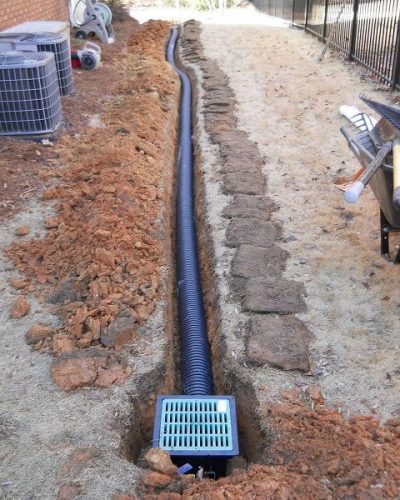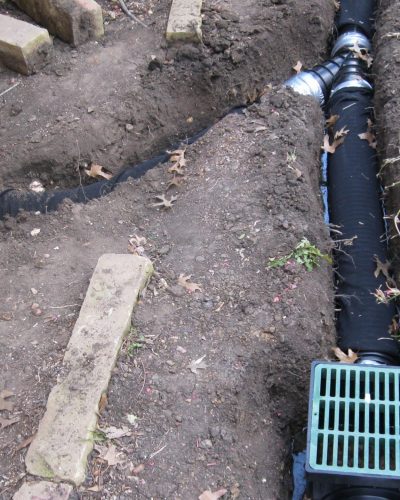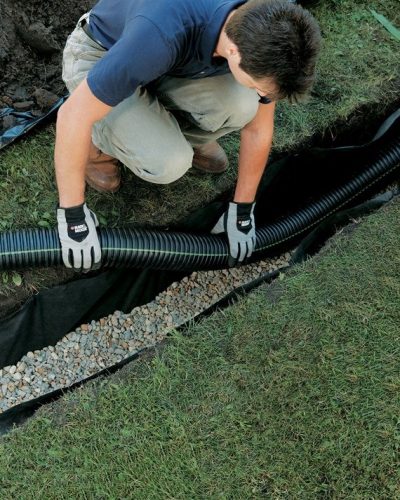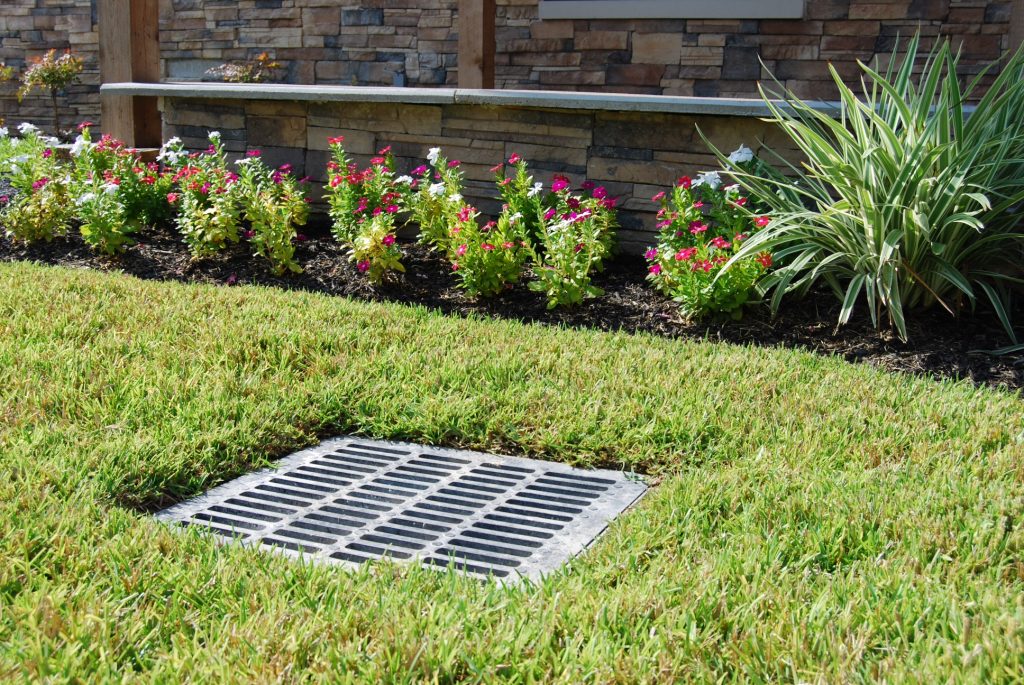What is a French Drain System?
A French drain, which may also be called a curtain drain, perimeter drain, weeping tile, or agricultural drain, is a gravel-filled trench that includes a perforated or slotted pipe. These drains are used to direct surface water or groundwater away from a specific area, which is usually your home’s foundation. French drains direct surface level water toward the lowest point and allows it to seep through the surface level gravel into the drain. This gravel also blocks the passage of excess debris. The water is then collected in the perforated pipe, running toward the base of the drain and then directed away from your home or toward a more suitable area.
French drains differ from a typical surface drain or gutter system because they collect water, that normally would pool in your yard, over the entire length of the drain instead of one particular spot. They also prevent water from collecting and pooling in specific areas, saturating the ground soil below, and also may lead to foundation problems on the surface or below your home.
Instead, the water is directed to a more desirable location such as a dry well or an area of your choosing. Subsurface drainage systems have been in use for centuries, helping with everything from controlling agricultural runoff to providing yard drainage. They take many forms but are all similar in design and function to the traditional French drain system.
The earliest French drains were simple ditches filled with gravel. While many people assume the origins of the French drain date back to France, the drain’s name is actually believed to have come from a former lawyer and U.S. Assistant Treasury Secretary Henry Flagg French, who marketed them in his 1859 book, Farm Drainage.”



Estimates only take half an hour! Contact Us Today to set up an appointment.
French used sections of roofing tile to create their own drains before later advancements included perforated drains to prevent clogging.
If you’re researching French drains, you might already be facing issues relating to standing water and looking to learn more about what types of problems a French drain can SOLVE and whether if it’s right for your property.
Depending on where you live here in the Dallas-Fort Worth area, your home’s most important drain may not be located in your kitchen or your bathroom, or with your gutters. In fact, in many cases, it may not be part of your indoor plumbing at all.
Instead, your most important drain can be a trench filled with small or medium sized gravel and a perforated pipe in the landscape or next to your home’s foundation. While you hardly see it, its role is essential to protecting your home from water damage and to your foundation.
